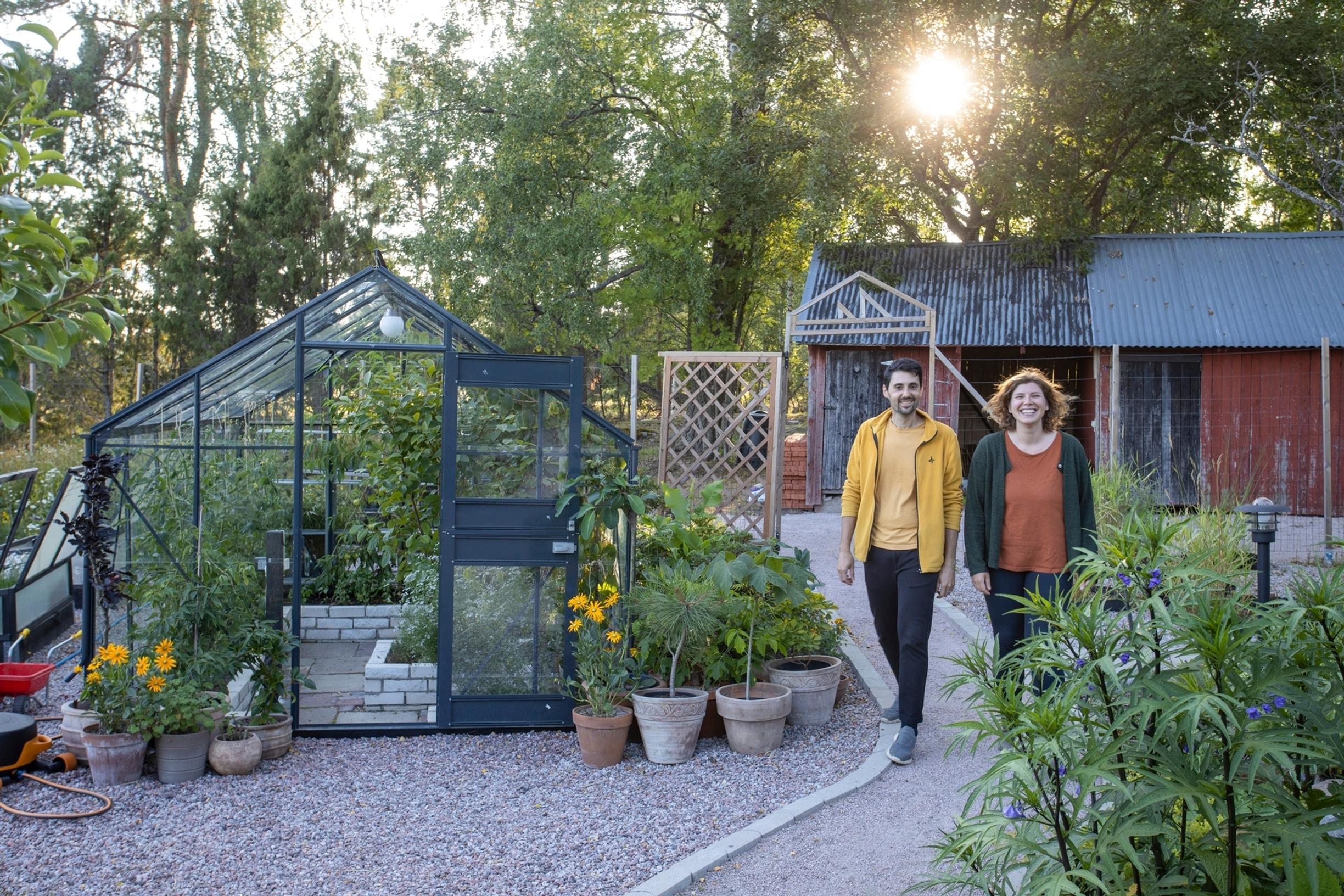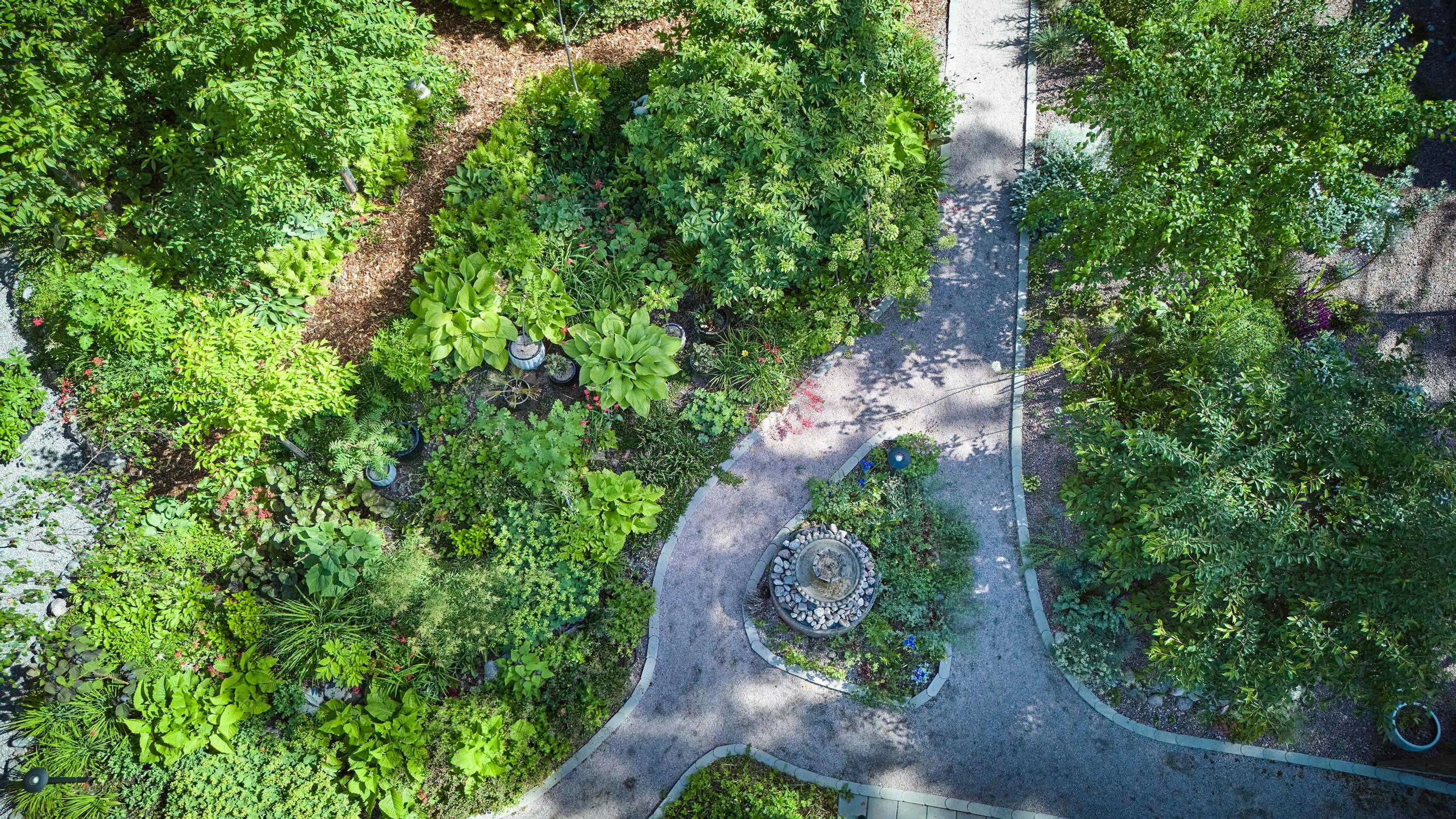
From thick grass and ground elder to a vibrant garden: two passionate gardeners create a masterpiece
In Maria and Antonio’s garden in Kirkkonummi, besides their shared areas, each has a personal space: a lush jungle and a ruggedly beautiful gravel garden. The couple did not want any lawn at all.
This is it. We absolutely have to have it! said Maria Jaatinen and Antonio Cueva Urraco, when they first saw the gently south-facing slope that offered a beautiful view of open farmland. The lot, lined with old pines, also featured a 1970s house, but Maria and Antonio were mainly looking for a place to build the garden of their dreams.
Before they began looking for a new home, the couple lived in an apartment and their interest in greenery first grew from houseplants. It kept evolving through gardening shows and garden trips, and the New Perennial Movement’s natural, semi-wild style became a source of inspiration.
“Somehow it just spun out of control,” Maria laughs in their impressive garden, which is hard to believe was only created five summers ago—in the midst of their hectic schedules.
The pair have gradually shaped nearly one hectare (2.5 acres) to their liking. Because the area was previously overgrown with thick grass, they have temporarily covered sections with plastic mulch designed for strawberries to smother unwanted plants.
“We’ve learned that couch grass and ground elder need to be covered for at least two summers before it’s worth planting in that area.”
They never wanted a lawn at all. Part of the property is seeded as a meadow, and some is left completely in its natural state. Below the slope, the 200 m² (2,150 sq ft) kitchen garden [in Finnish] produces an abundance of vegetables and root crops.
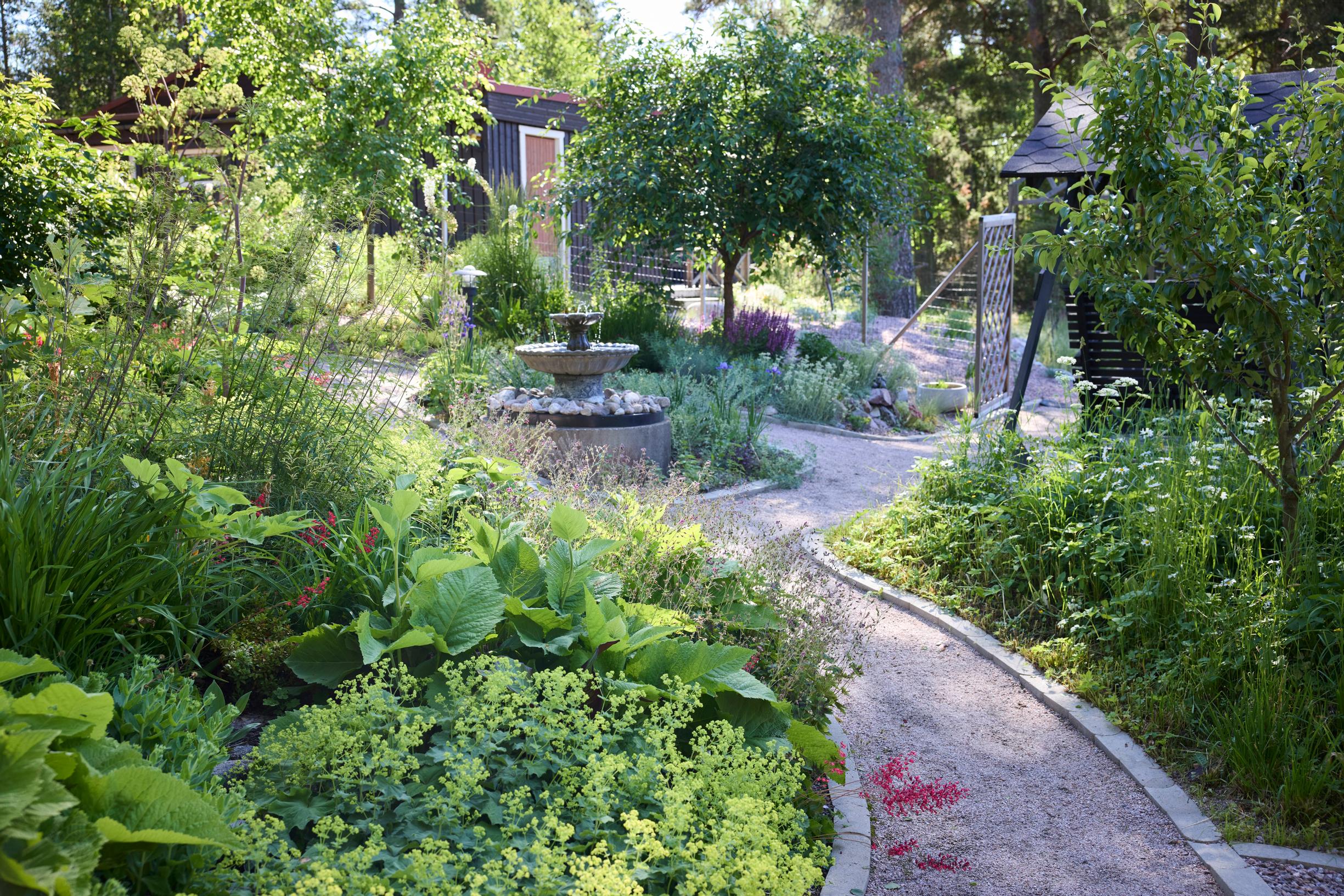
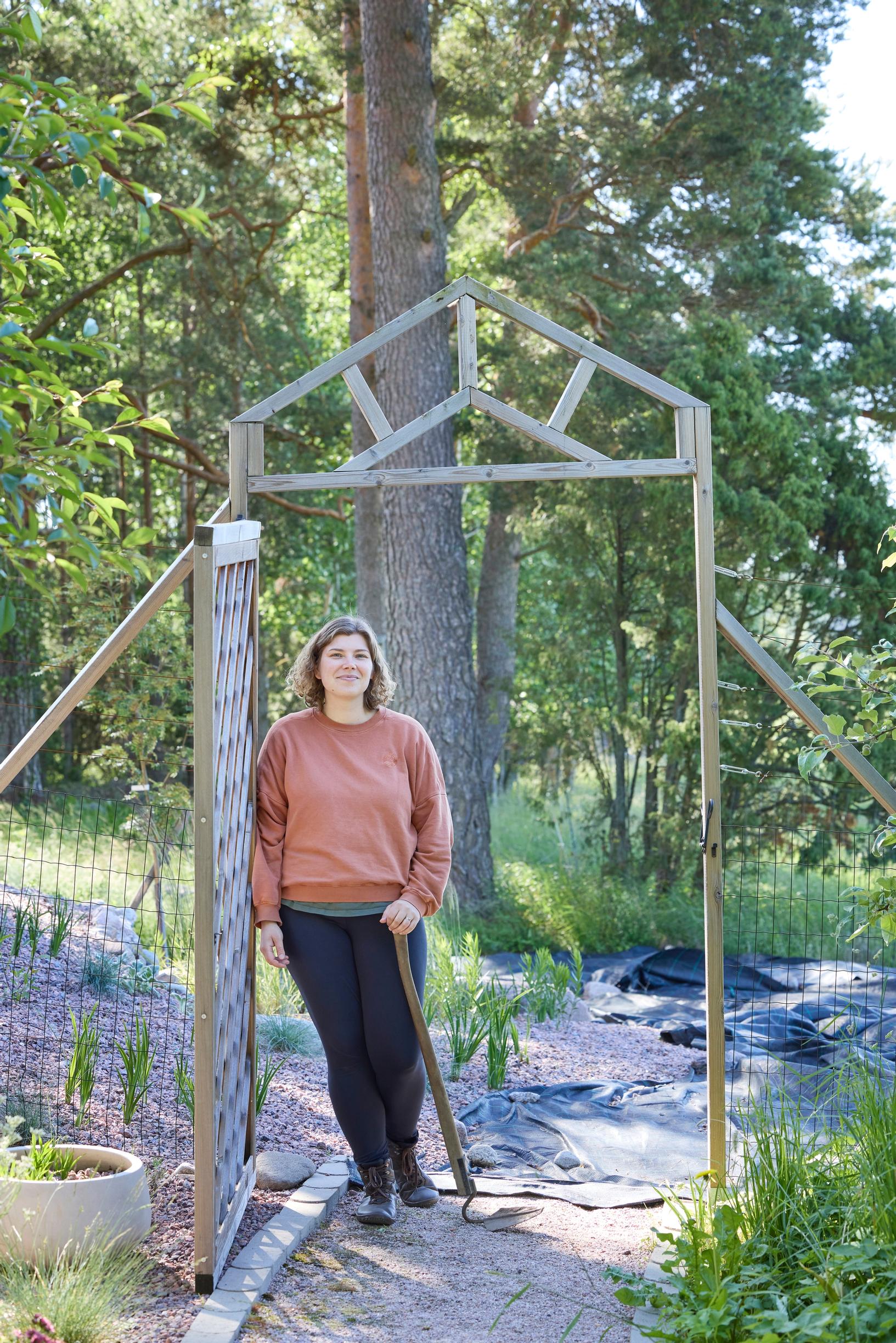
What: Maria and Antonio’s yard in Kirkkonummi
Zone: Ib (comparable to USDA zone 5–6)
Size: 9,750 m² (~105,000 sq ft), about 2,000 m² (~21,500 sq ft) of maintained garden
Soil: Clay and moraine improved with purchased topsoil
Special feature: A skillfully designed yard with numerous distinct areas
Instagram: @auringonlaita
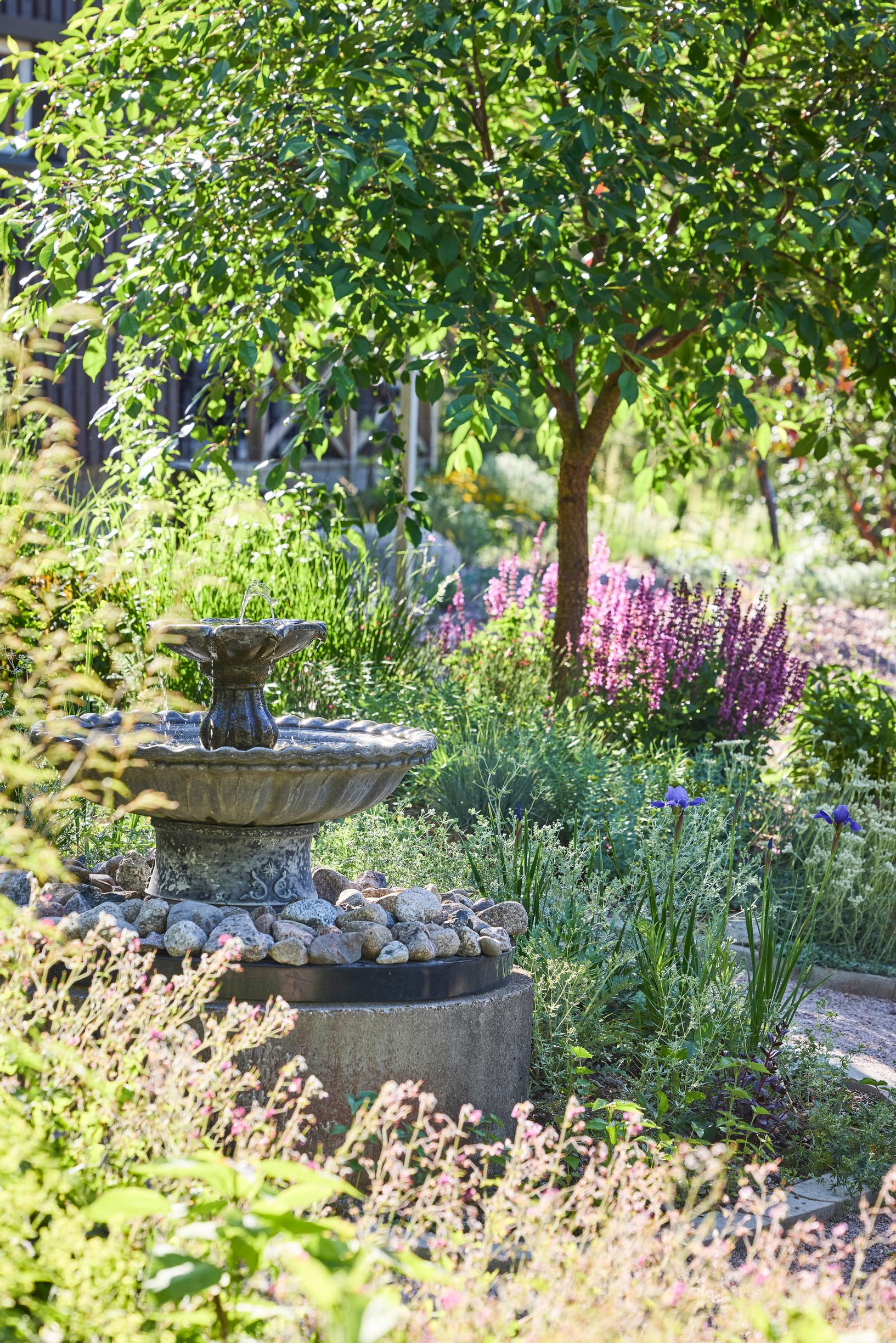
A path at the top of the yard divides the garden into two areas with distinctly different atmospheres. On one side is Maria’s ruggedly beautiful gravel garden; on the other is Antonio’s lush jungle garden. Although these passion projects have completely different styles, both feature artful plant combinations. Maria has taken inspiration for her gravel garden from the Mediterranean landscape and also from trips to Antonio’s home region in Andalusia, Spain. Antonio, on the other hand, wants to create something entirely different from what is typically found in his dry homeland.
“I want leaves as large as possible, lush and abundant—like a jungle with its tropical plants,” Antonio explains.
Hostas, ferns, Rodgersias, and shieldleaf Rodgersias make a strong impression with their large, beautifully shaped leaves. The same goes for the in Finland rarely seen empress tree (Paulownia tomentosa) and hybrid catalpa (Catalpa × erubescens ‘Purpurea’). Some of these plants don’t survive Finnish winters, so the jungle includes container plantings. Because many of Antonio’s prized specimens thrive in partial shade, he planted a row of fast-growing, wide-crowned Amur chokecherries at the top of the slope.
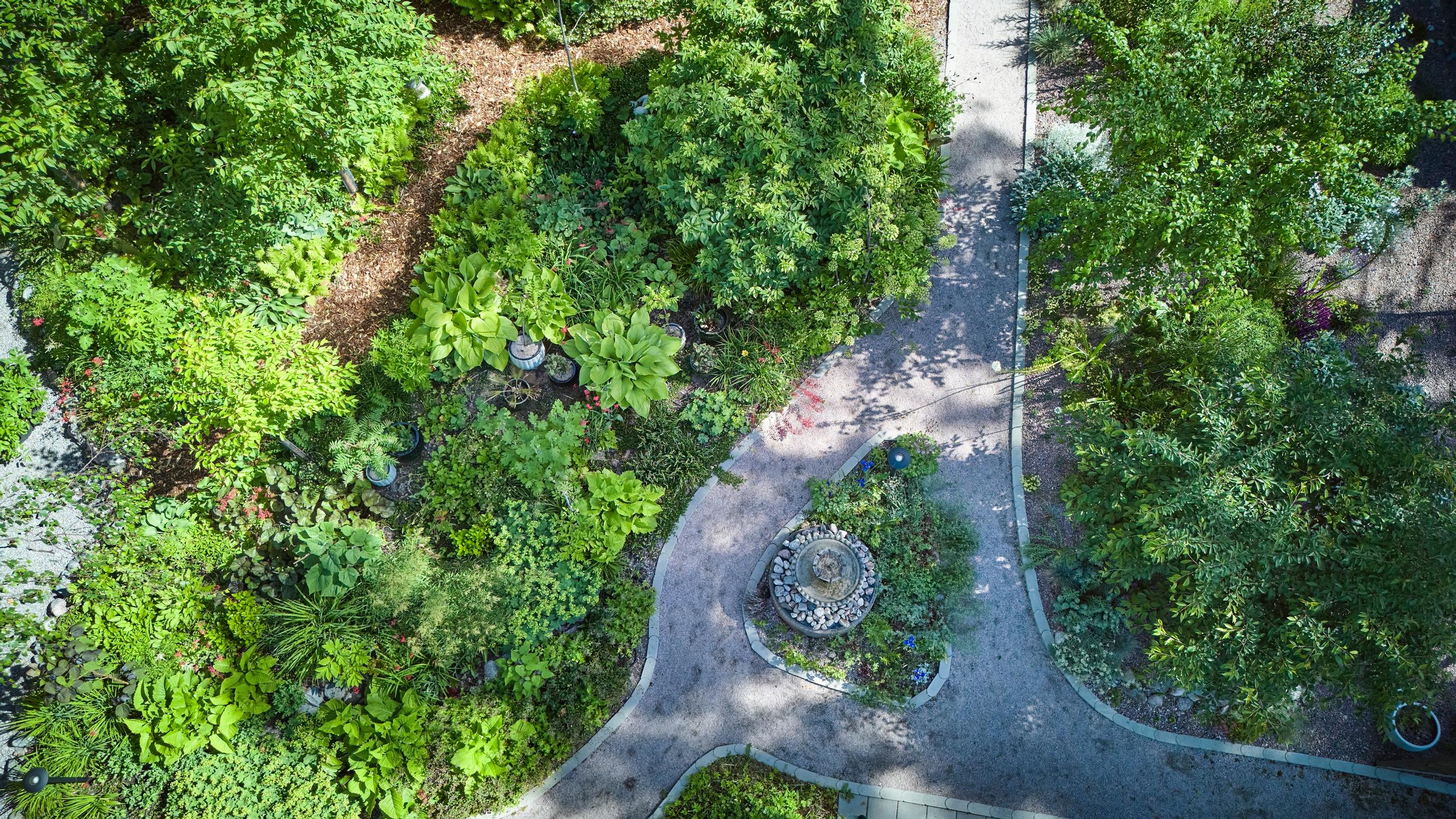
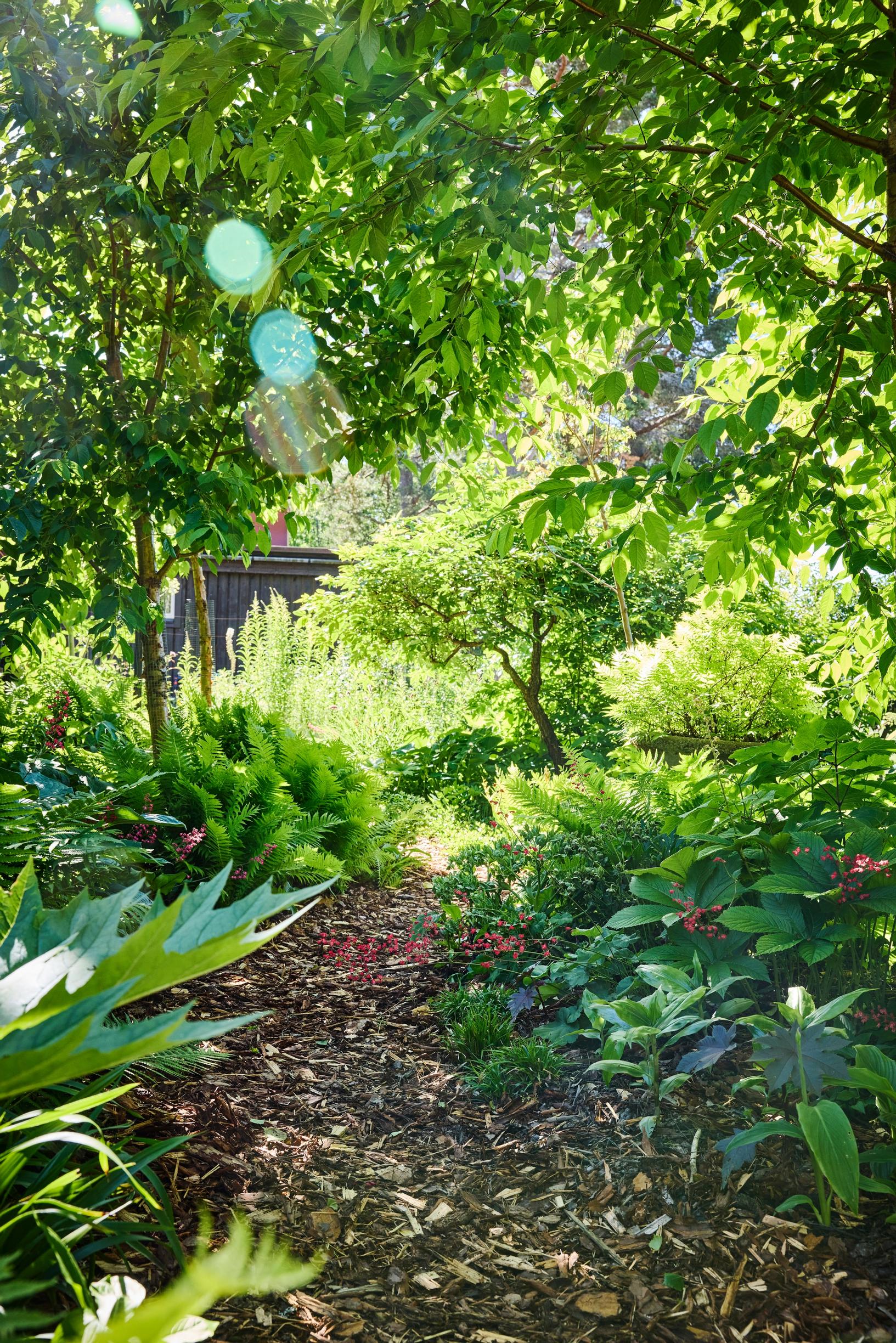
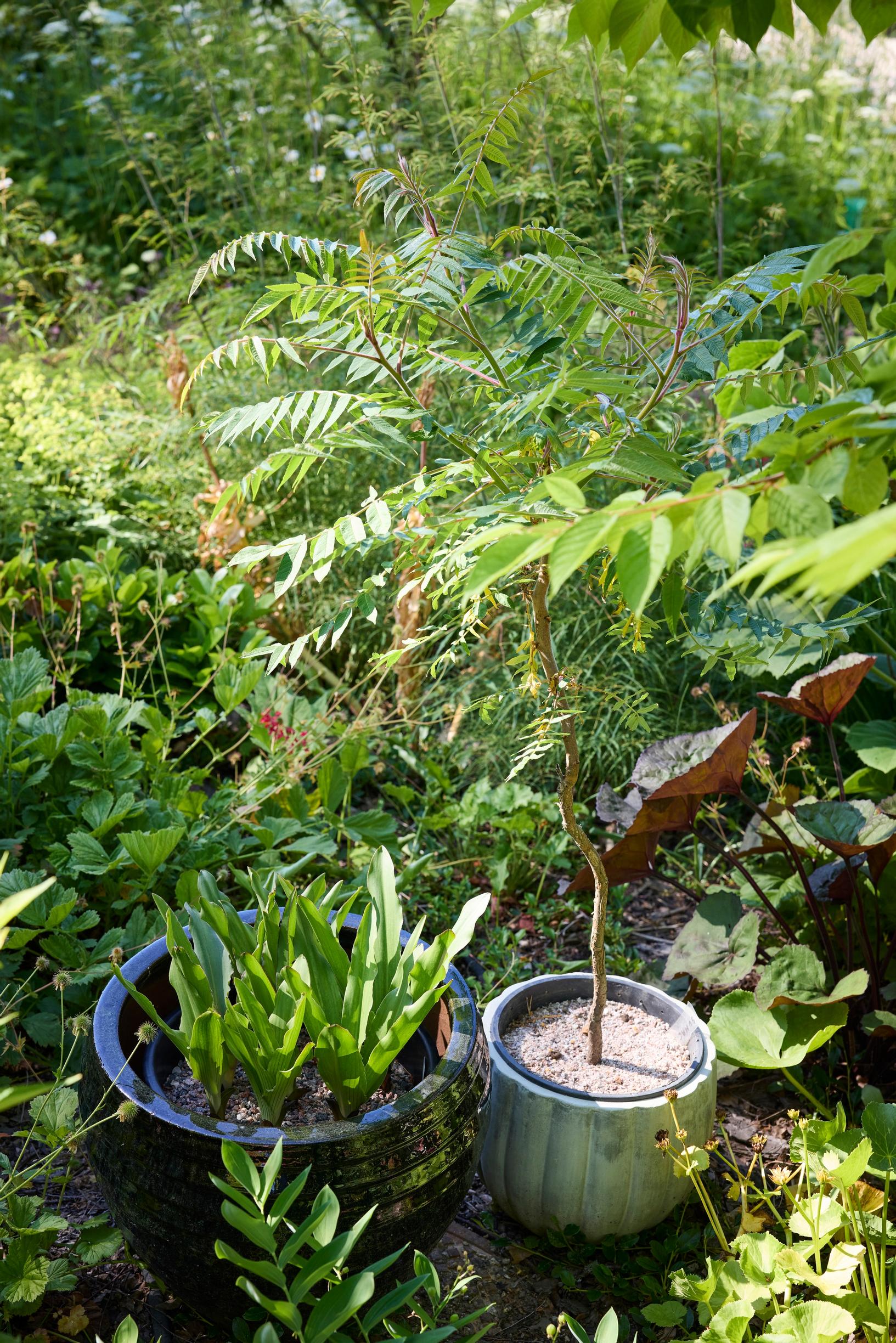
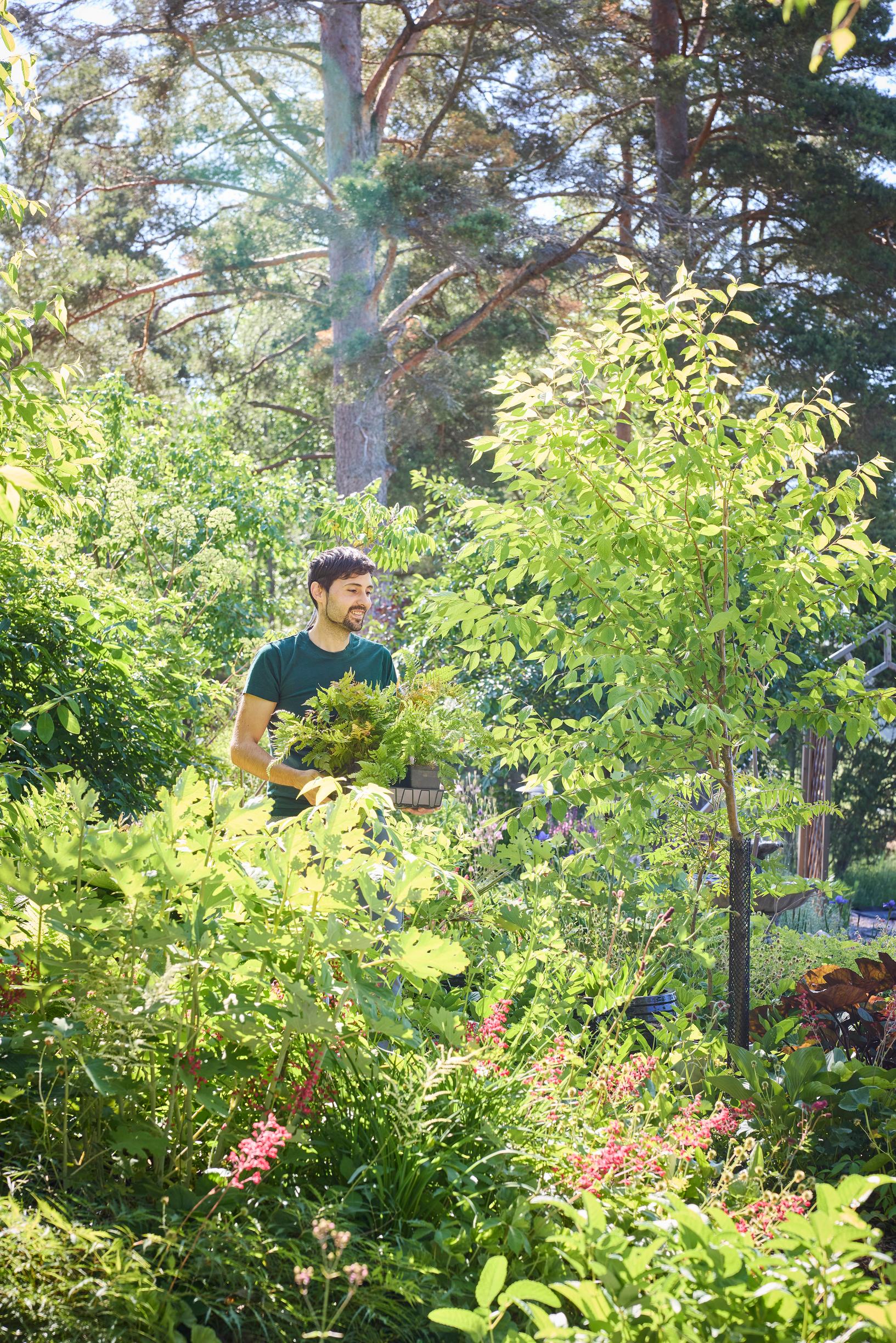
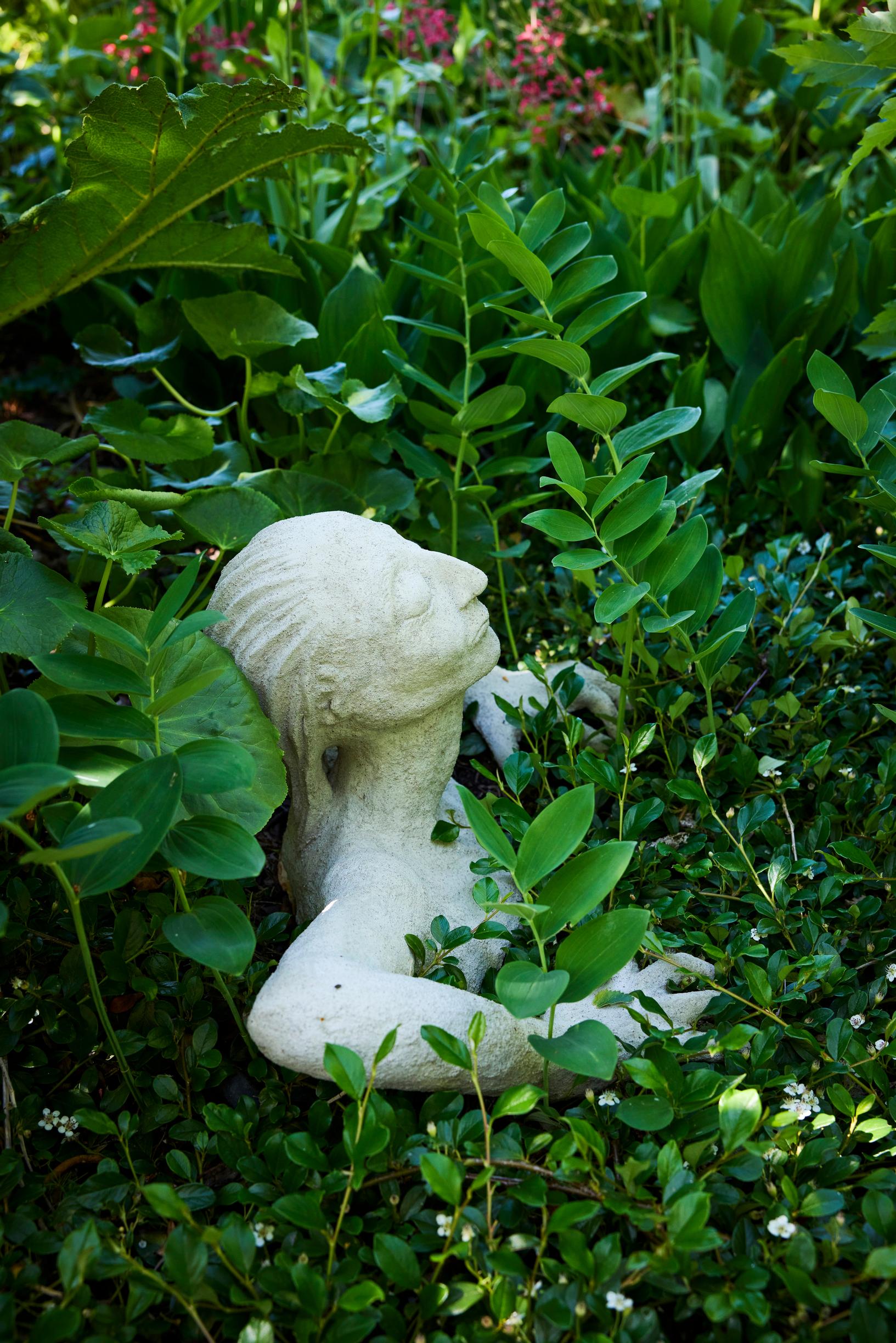
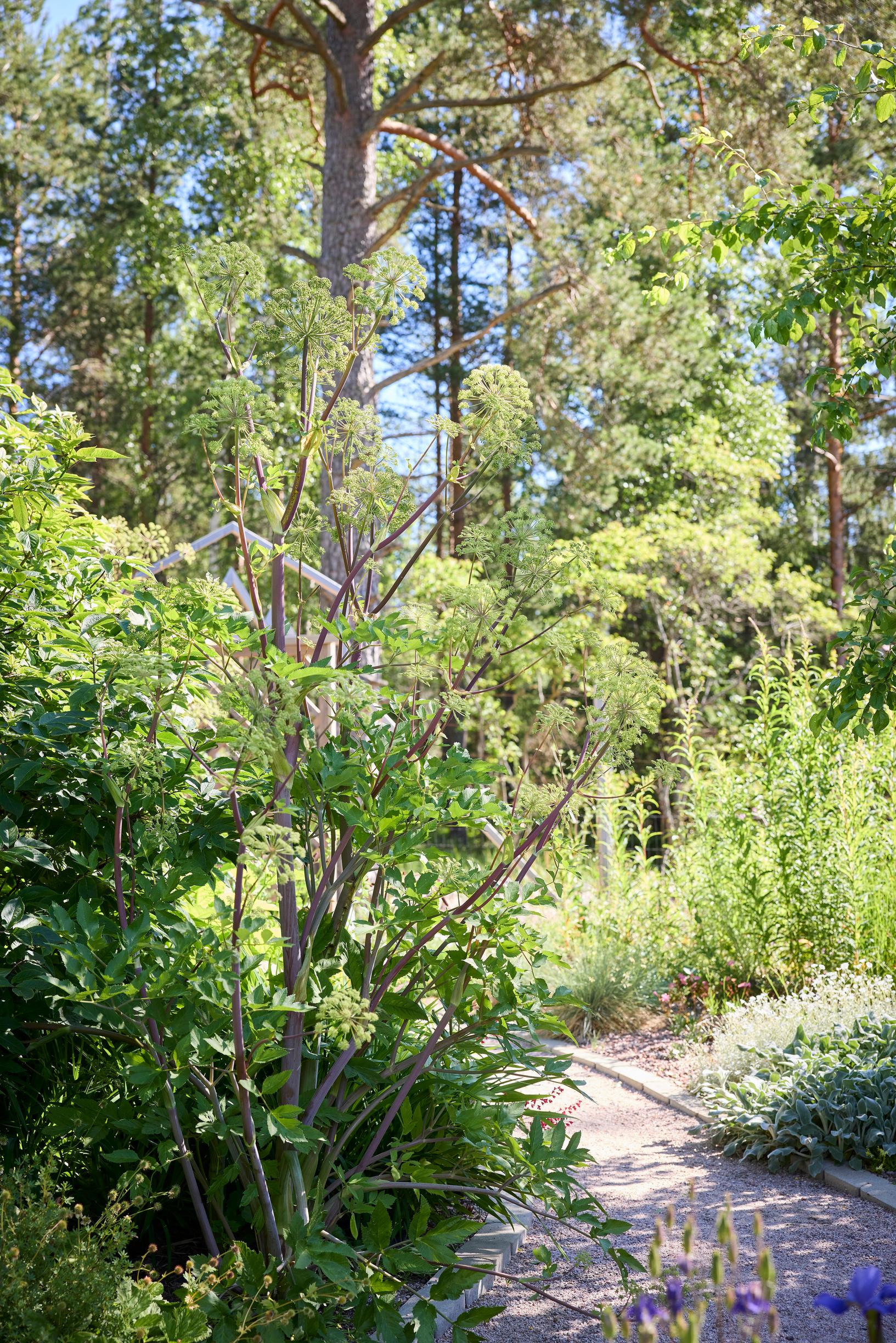
On the other side of the path, the gravel garden is in bloom all summer. When we visited just before Midsummer, sand pink, cat’s foot, salvia, catnip, snow-in-summer, roseroot, thrift, lewisia, and creeping thyme were all blooming. Beyond the blossoms themselves, Maria also values plant forms, growth habits, and coloration. For instance, she has placed gray-foliaged plants throughout the gravel area.
“You’ve got to have gray tones. They add a sense of lightness,” Maria explains.
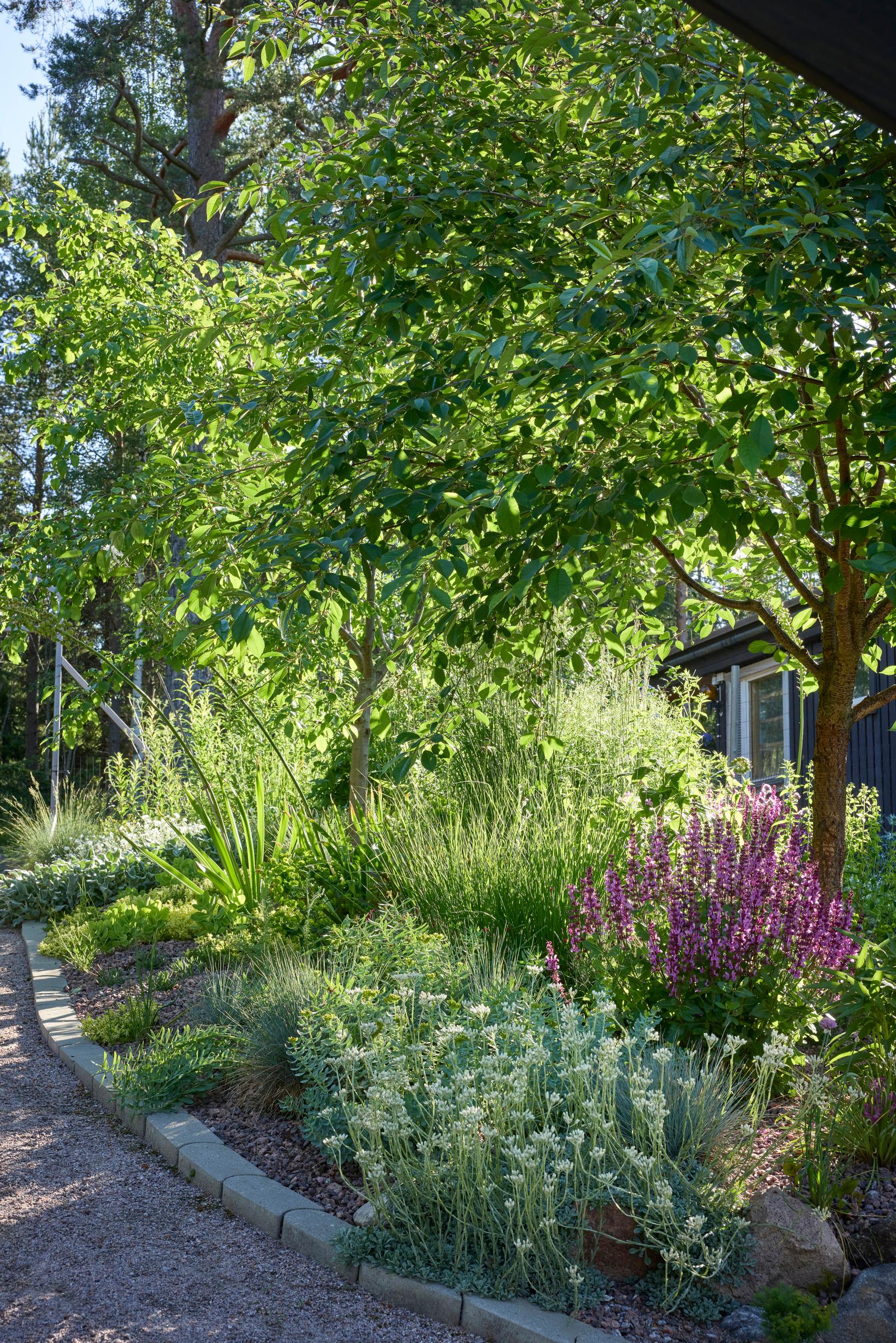
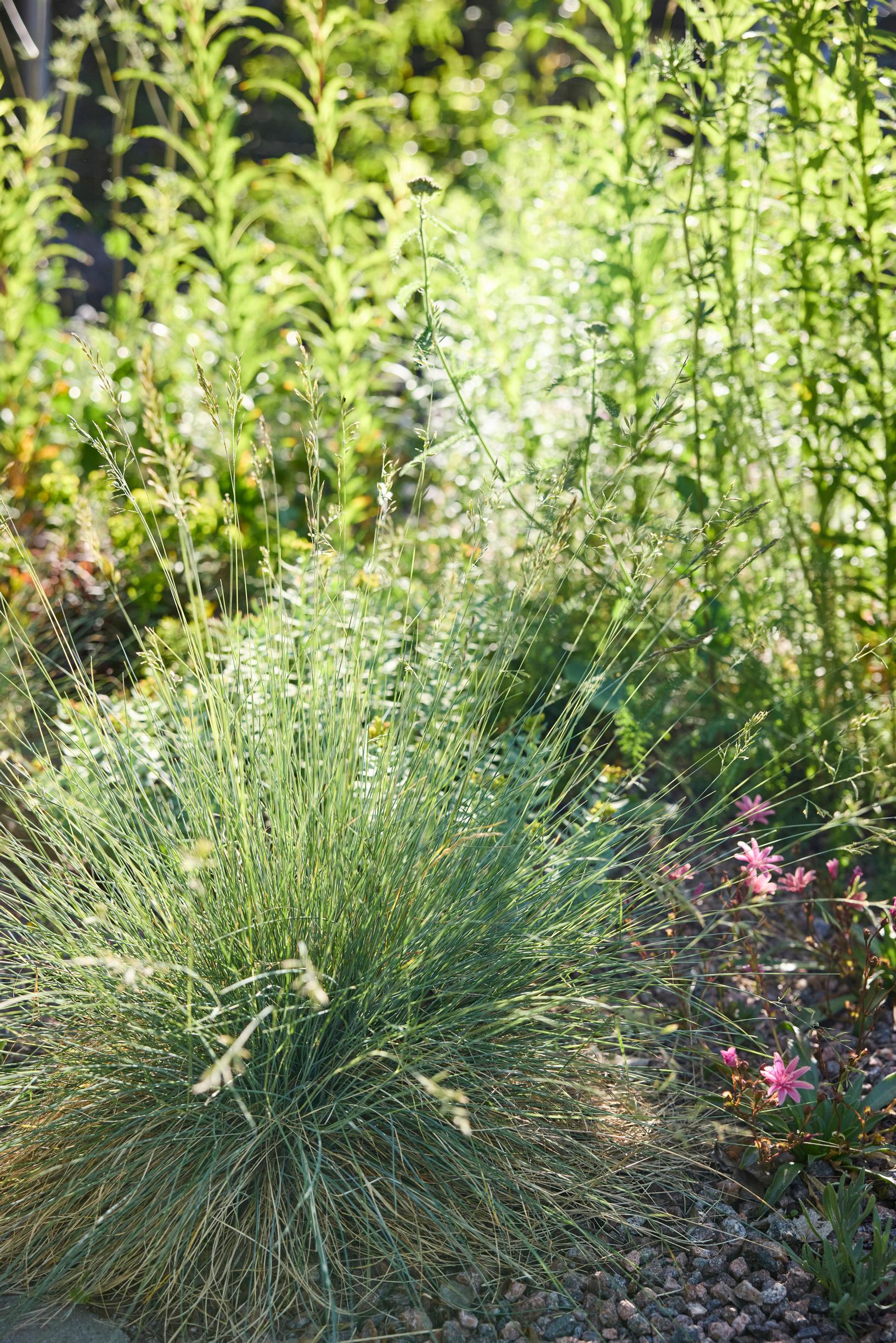
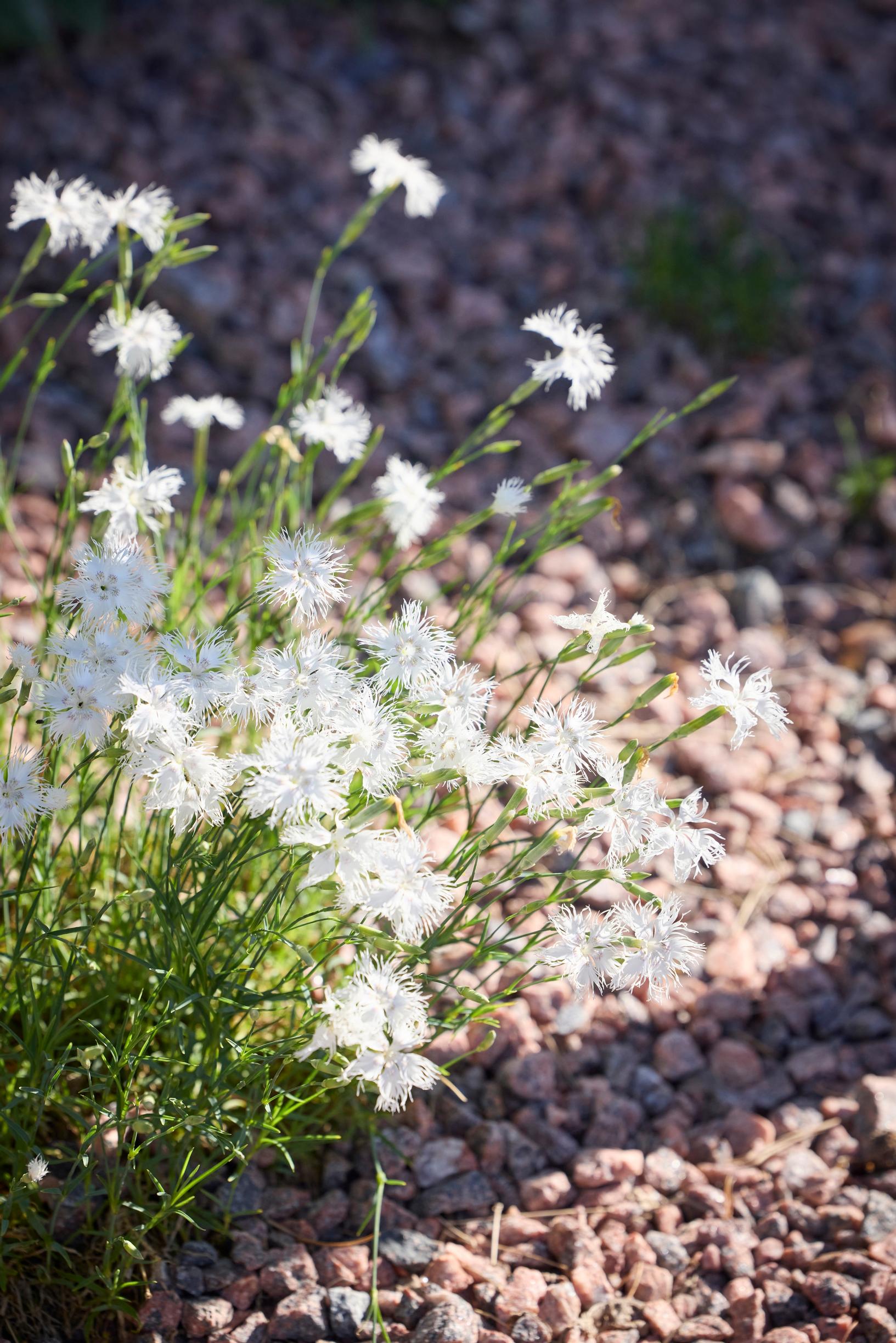
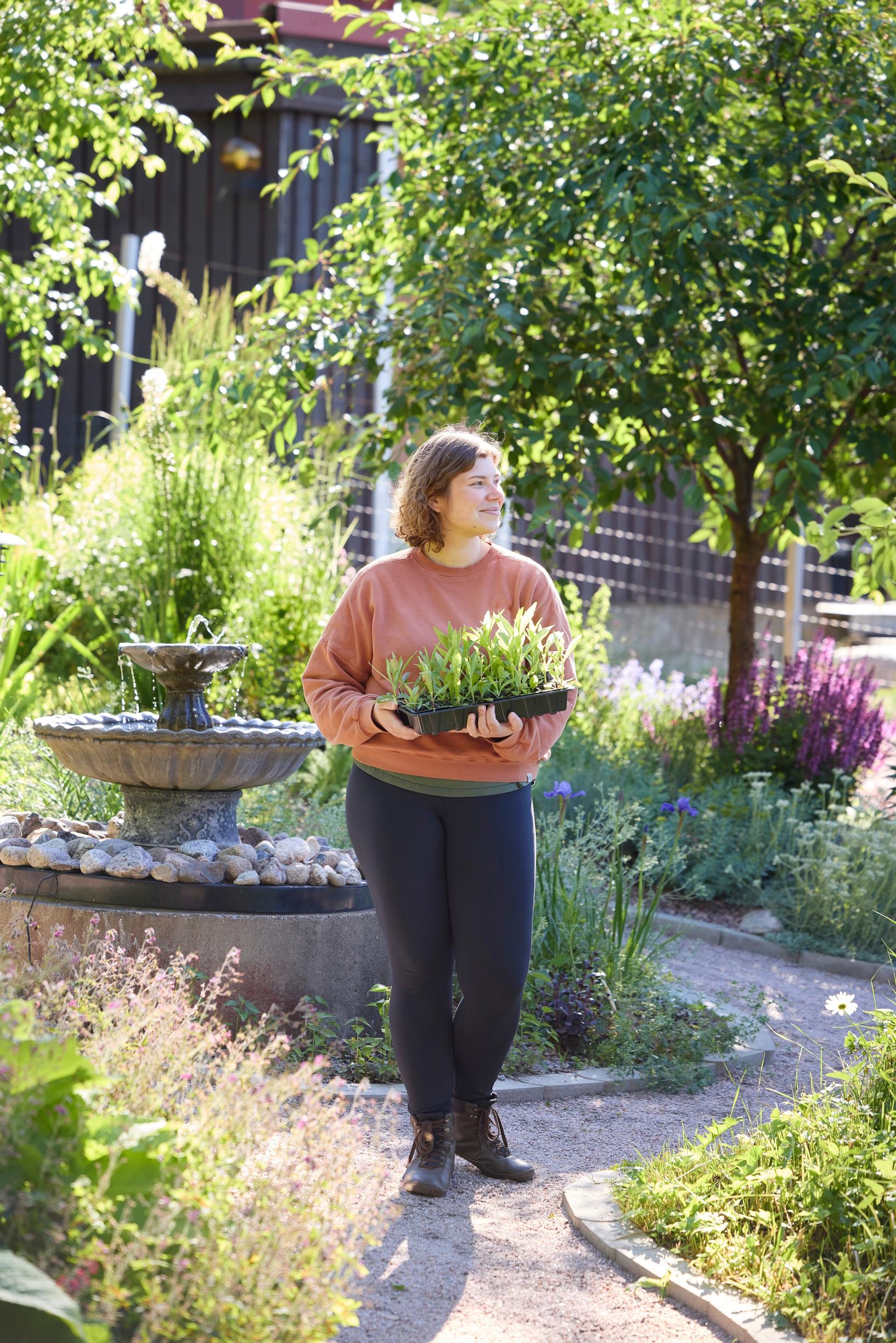
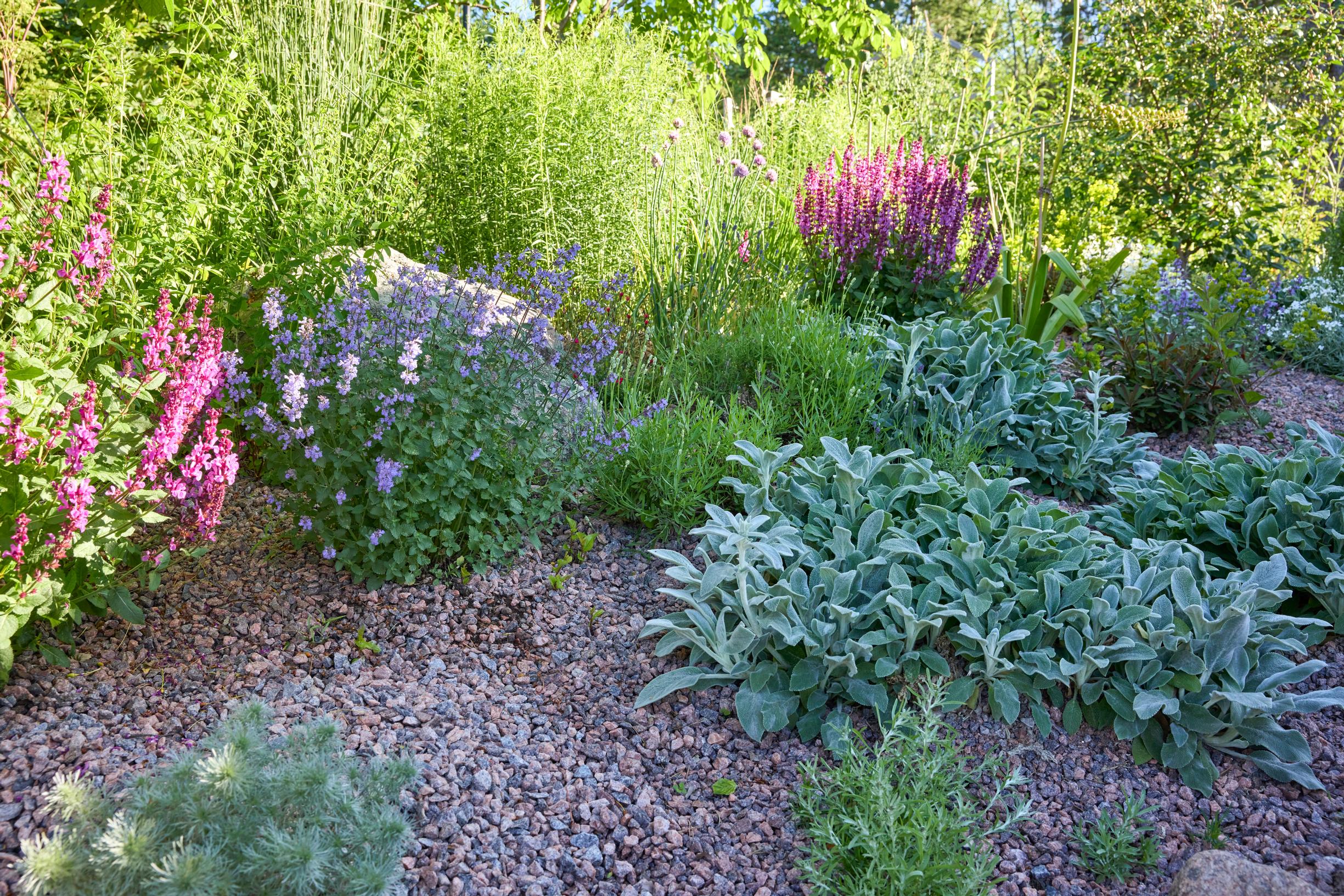
There’s also room for chance. In the middle of the gravel garden stands a tall plant that looks very familiar, but could it be…
“Fireweed! It’s on probation here. If it starts spreading too aggressively, we’ll just eat the shoots next spring,” says Maria about this tasty wild vegetable.
The look of this area changes every year. One plant might spread, another might fade. Last winter seemed to kill off the lavender plants that had thrived here for five years, but they started sprouting again from ground level.
Antonio grows many of the yard’s plants from seeds and cuttings. Even now, dozens of trays with hundreds of seedlings are arranged near the greenhouse. For example, plume thistle is on the way. There’s also an area where Antonio grows trees to be planted later. The couple has so many ideas that they estimate it will take at least ten years to bring them all to life. They were never aiming to finish quickly in the first place.
“It’s better to have a long-term hobby,” Maria says with joy.
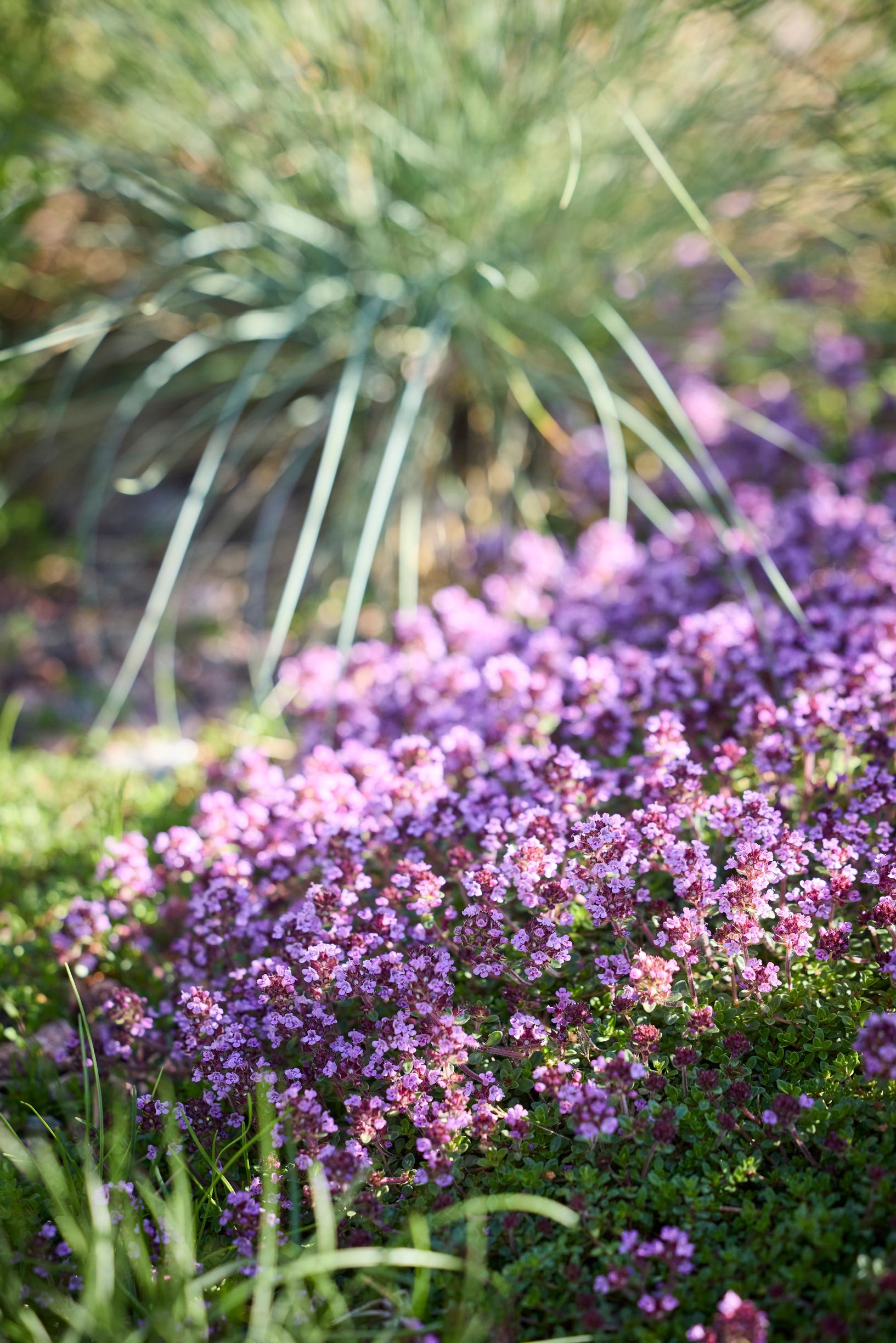
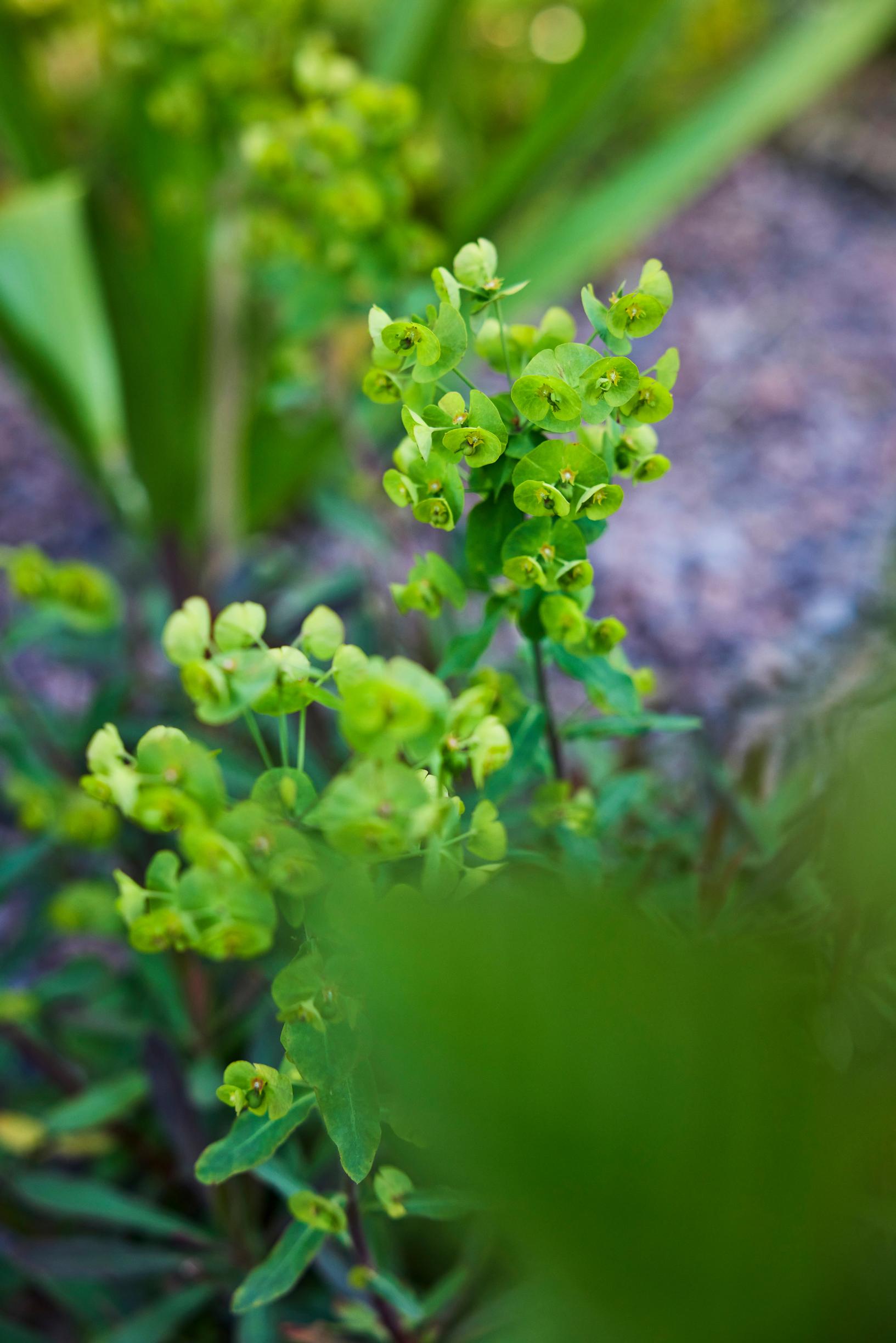
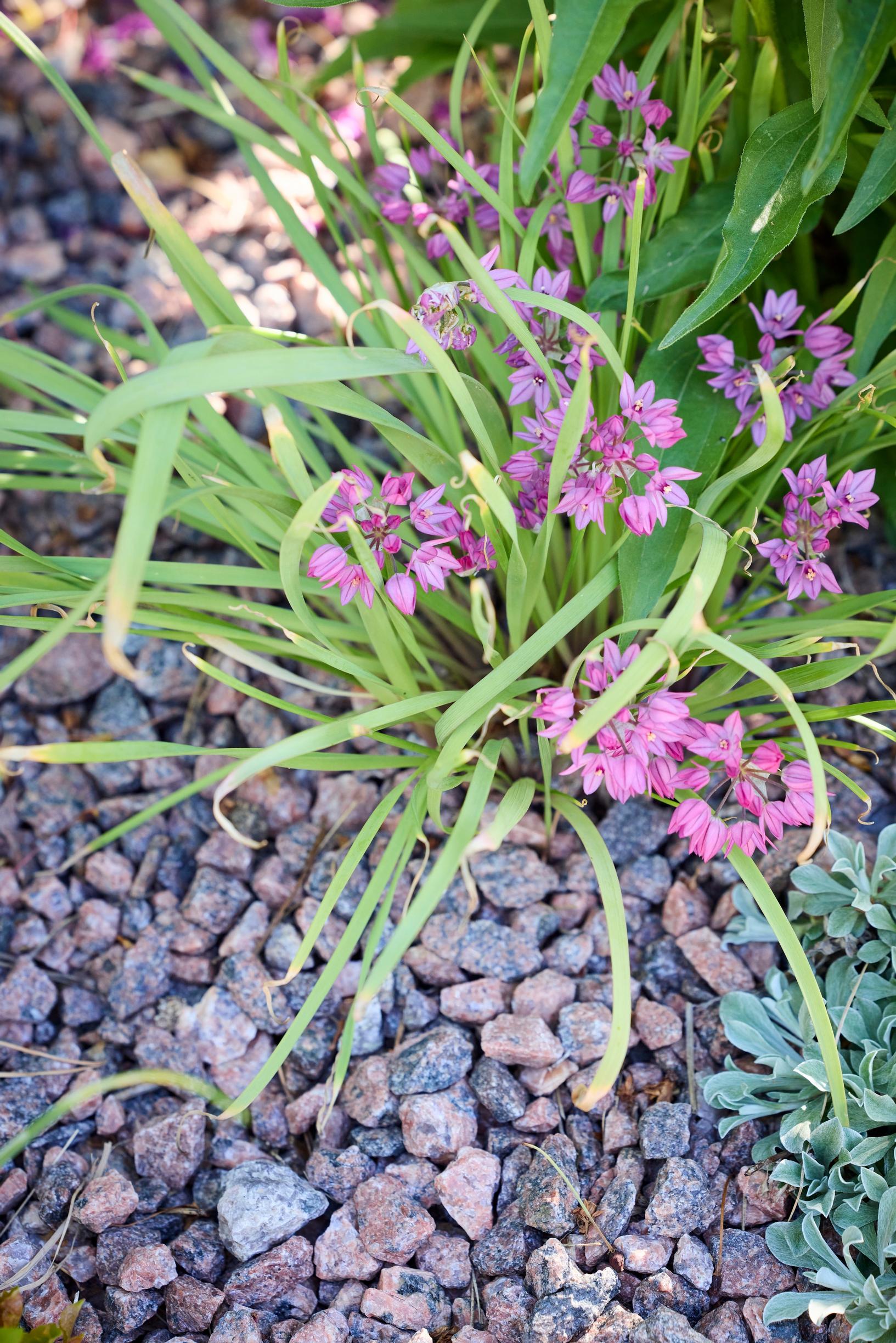
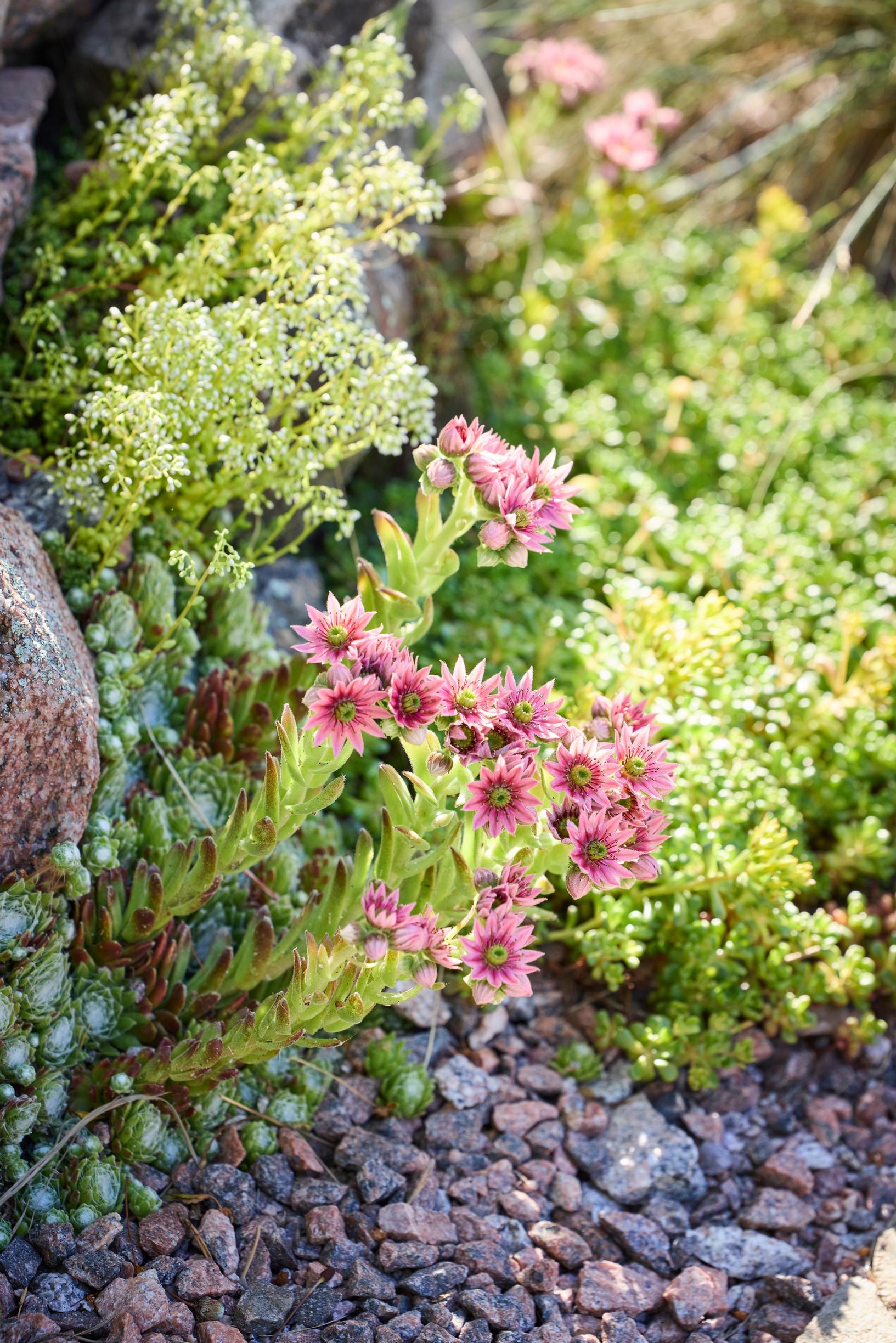
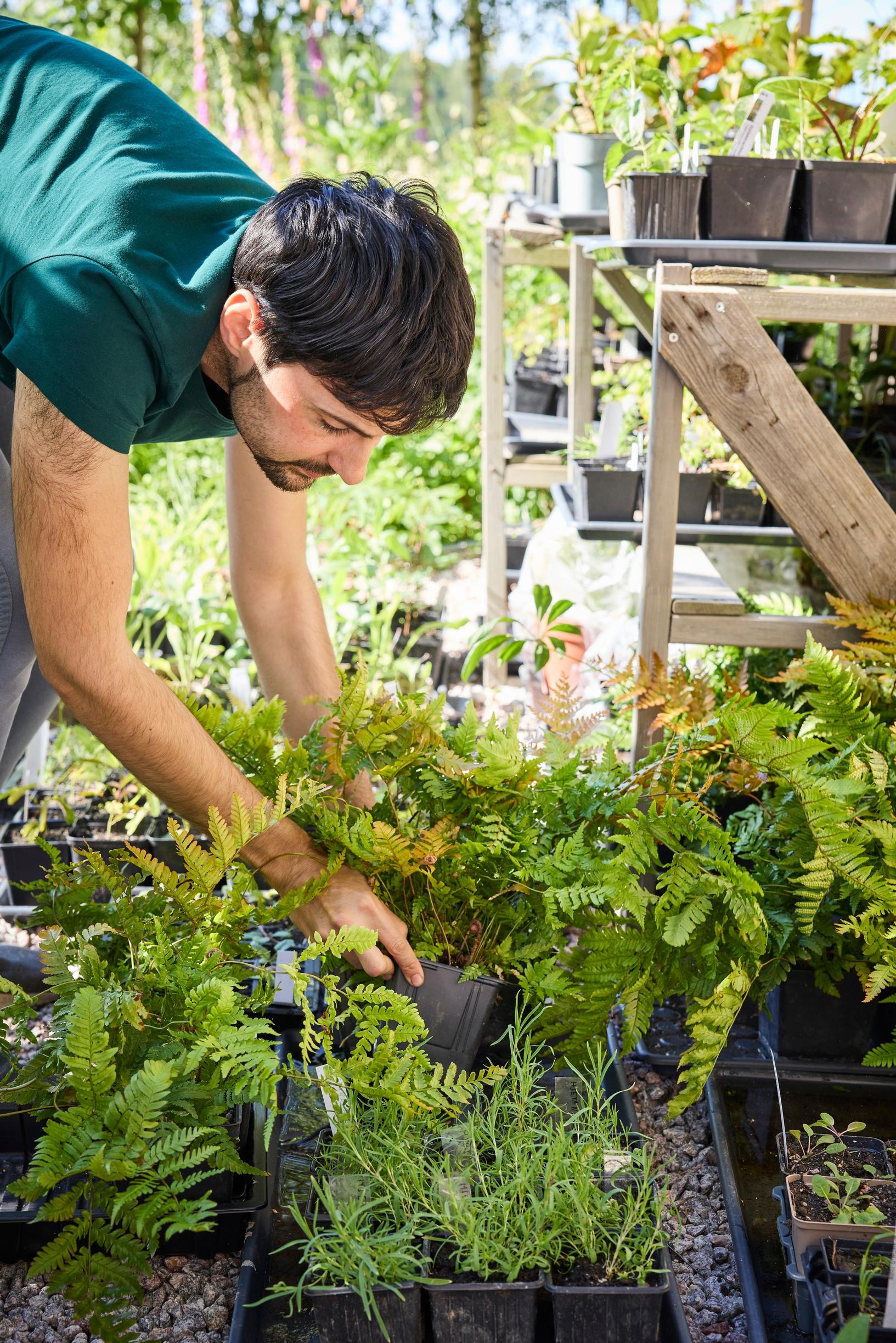
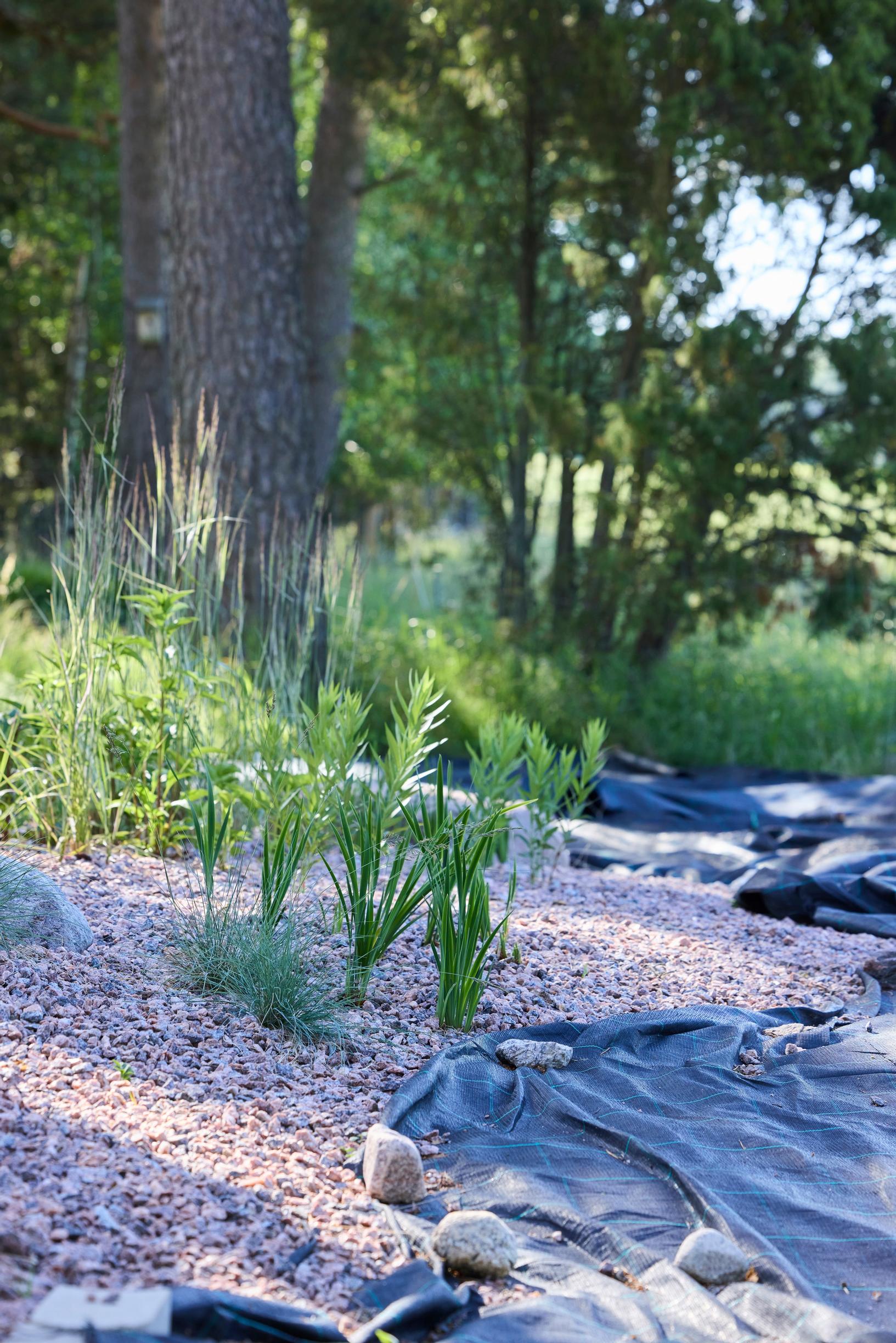
Also see the article about Maria and Antonio’s produce garden: In Maria and Antonio’s gorgeous kitchen garden, you’ll find rows of tomatoes grown outdoors and in a greenhouse, plus a persimmon they brought home from their honeymoon [in Finnish]
